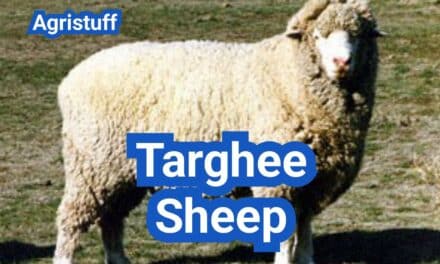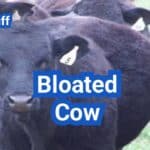The Jamnapari goat is a significant breed known for its dairy and meat production. Originating in the Braj region of Uttar Pradesh, India, it has been exported to various countries.
This Indian breed of domestic goat is valued for its unique characteristics, such as its large size and high milk production. The breed has gained recognition globally, including in Indonesia, where it is referred to as the Etawah.
Key Takeaways
- The Jamnapari goat is known for its dairy and meat production.
- It originated in the Braj region of Uttar Pradesh, India.
- The breed is valued for its large size and high milk production.
- It has been exported to countries like Indonesia.
- In Indonesia, it is referred to as the Etawah.
Understanding the Jamnapari Goat
Renowned for its friendly nature and impressive milk yield, the Jamnapari goat is a significant breed in dairy farming. This very beautiful dairy goat breed is cherished not only for its high-quality milk but also for its friendly temperament, making it a valuable asset in various agricultural settings.
Origin and Significance
The Jamnapari goat, originating from India, has been a cornerstone in dairy and meat production for centuries. Its significance extends beyond its milk and meat, as it plays a vital role in the livelihoods of many farmers. The breed’s high milk production capabilities and friendly nature make it an ideal choice for dairy farming.
The Jamnapari goat is considered a dairy breed and is known for its high milk production. It is also used for meat production, making it a versatile breed that serves both dairy and meat purposes.
Economic Importance
The economic importance of the Jamnapari goat cannot be overstated. Its high milk yield and nutritious milk composition make it an important dairy breed, contributing significantly to the dairy industry. Additionally, its meat is considered to be of high quality, making it a valuable resource for meat production.
The breed’s economic significance is further enhanced by its meat production capabilities, providing a dual-purpose benefit to farmers. This versatility is crucial in agricultural economies where both dairy and meat products are in demand.
History and Origin of Jamnapari Goats

The Jamnapari goat breed has a rich history that spans centuries, originating in the Etawah District of Uttar Pradesh, India. This breed is particularly associated with the tehsil of Chakarnagar, where it was developed over time.
Ancient Origins in India
The history of the Jamnapari goat is deeply rooted in the Etawah District of Uttar Pradesh. The breed is believed to have originated in this region due to its favorable climate and geography. As an Indian breed, the Jamnapari goat has been an integral part of the local culture and economy for centuries.
“The Jamnapari goat is considered one of the best dairy breeds in India, known for its high milk production and distinctive physical characteristics.”
Development of the Breed
The development of the Jamnapari breed is closely tied to its geographic location. Over centuries, local farmers selectively bred goats to enhance desirable traits such as milk production, size, and coat color. This selective breeding resulted in the distinct characteristics that define the Jamnapari goat today.
| Characteristic | Description |
|---|---|
| Milk Production | High milk yield, making it suitable for dairy farming |
| Size | Medium to large size, with males weighing between 40-50 kg |
| Coat Color | Varied, including white, black, and brown |
Global Distribution
While the Jamnapari goat originated in India, it has since been introduced to various parts of the world. Countries such as Indonesia have imported Jamnapari goats to improve local breeds and enhance dairy production. This global distribution has helped spread the breed’s desirable traits worldwide.
The global distribution of Jamnapari goats is a testament to their versatility and value in different agricultural contexts. As the demand for high-quality dairy products continues to grow, the Jamnapari goat is likely to play an increasingly important role in global dairy farming.
Physical Characteristics of Jamnapari Goats
One of the most recognizable goat breeds, the Jamnapari, boasts impressive physical characteristics that distinguish it from other breeds. Understanding these characteristics is crucial for breeders and enthusiasts alike.
Distinctive Appearance Features
The Jamnapari goat is known for its highly convex nose and long, drooping ears, giving it a unique appearance. The breed’s facial structure, combined with its ear length, contributes to its distinctive look.
Size and Weight Specifications
Jamnapari goats are characterized by their large size. Males can weigh up to 40 kg, while females typically weigh around 30 kg. This size, combined with their other physical attributes, makes them stand out.
| Gender | Average Weight (kg) | Height at Withers (cm) |
|---|---|---|
| Male | up to 40 | around 90 |
| Female | up to 30 | around 80 |
Color Variations and Coat Type
Jamnapari goats exhibit a variety of coat colors, ranging from white to brown and black, often with distinctive markings. Their coat type is typically short and smooth, requiring minimal grooming.
The physical characteristics of Jamnapari goats, including their size, ear length, and coat variations, make them a unique and valuable breed for various agricultural purposes.
Jamnapari Goat Temperament and Behavior

With their friendly and tractable nature, Jamnapari goats have become a favorite among farmers and animal enthusiasts alike. Their temperament is one of their most significant advantages, making them relatively easy to handle and manage.
Personality Traits
Jamnapari goats are known for their friendly and docile nature. They are often described as calm and gentle, traits that make them an excellent choice for both novice and experienced breeders. Their friendly disposition means they can be quite interactive, often approaching humans for interaction.
Some key personality traits of Jamnapari goats include:
- Calm and gentle demeanor
- Friendly and approachable
- Social and interactive
- Relatively easy to handle
Social Behavior
Jamnapari goats are social animals that thrive in the company of other goats. They have a natural instinct to form herds and establish a pecking order within their social groups. This social behavior is crucial for their well-being and productivity.
To manage their social behavior effectively, it’s essential to:
- Provide adequate space for them to roam and interact
- Ensure a balanced herd dynamic to minimize stress
- Introduce new goats to the herd gradually to prevent conflict
Handling Techniques
Handling Jamnapari goats requires a combination of gentle care and consistent training. Their friendly nature makes them responsive to positive reinforcement techniques. It’s essential to approach them calmly and avoid sudden movements that might startle them.
Effective handling techniques include:
- Moving slowly and deliberately around them
- Using positive reinforcement, such as treats, to encourage desired behavior
- Being consistent in handling and care routines
By understanding and respecting their temperament and behavior, breeders can create a harmonious and productive environment for their Jamnapari goats.
How to Breed Jamnapari Goats
The process of breeding Jamnapari goats involves multiple critical steps, starting with the selection of high-quality breeding animals and extending to proper care during kidding and postpartum periods.
Selecting Breeding Stock
Choosing the right breeding stock is fundamental to a successful Jamnapari goat breeding program. High-quality breeding animals should exhibit desirable traits such as good conformation, high milk production potential, and robust health.
When selecting breeding stock, consider factors such as:
- Genetic lineage and pedigree
- Physical characteristics and conformation
- Milk production records (for does)
- Health status and disease resistance
Reproductive Cycle Management
Understanding and managing the reproductive cycle of Jamnapari goats is crucial for optimizing breeding outcomes. The estrus cycle in does typically lasts about 21 days, with estrus lasting 24-36 hours.
| Reproductive Parameter | Average Duration |
|---|---|
| Gestation Period | 150 days |
| Estrus Cycle | 21 days |
| Estrus Duration | 24-36 hours |
Breeding Techniques
Effective breeding techniques are essential for achieving high conception rates and healthy offspring. Natural breeding is commonly practiced, where a selected buck is introduced to the doe during estrus.
It’s also important to maintain accurate breeding records, including mating dates, expected kidding dates, and birth weights of kids.
Kidding and Postpartum Care
Kidding is a critical period that requires careful monitoring to ensure the health of both the doe and the kids. Proper postpartum care includes providing adequate nutrition, monitoring for signs of illness or complications, and ensuring kids receive adequate colostrum.
By following these guidelines and maintaining a well-managed breeding program, farmers can improve the productivity and quality of their Jamnapari goat herd.
Milk Production and Quality

Jamnapari goats are prized for their significant milk yield and nutritional quality. The milk production of Jamnapari goats is a critical aspect of their value in dairy farming.
Expected Milk Yield
The average lactation yield of Jamnapari goats is slightly less than two kilograms per day. This yield can vary based on several factors including nutrition, health, and milking practices.
Milk Composition and Nutritional Value
The milk of Jamnapari goats is rich in nutrients, making it suitable for various dairy products. It contains a good balance of proteins, fats, and minerals essential for health.
- High Protein Content: Beneficial for muscle development and repair.
- Rich in Calcium: Essential for bone health.
- Good Source of Vitamins: Vitamins A, D, and B12 are present, contributing to overall well-being.
Factors Affecting Milk Production
Several factors can influence the milk production of Jamnapari goats, including:
- Nutrition and diet quality
- Health status and disease management
- Milking practices and frequency
- Comfort and living conditions
Milking Techniques
Proper milking techniques are crucial for optimizing milk yield and quality. This includes:
- Regular milking schedule
- Cleanliness and hygiene during milking
- Gentle handling to reduce stress
Meat Production Capabilities

The Jamnapari goat breed is renowned for its exceptional meat production capabilities. Jamnapari goats are not only valued for their milk but also for their meat, which is considered to be of high quality and low in cholesterol.
Growth Rates and Meat Yield
Jamnapari goats exhibit good growth rates, making them suitable for meat production. The breed’s growth rate is influenced by factors such as nutrition, genetics, and management practices. On average, Jamnapari goats can achieve significant weight gains, contributing to their overall meat yield.
Growth Rate Characteristics:
- Average daily gain: 100-150 grams
- Mature weight: 30-40 kg for females, 40-50 kg for males
- Rapid growth during the initial months
| Age (months) | Average Weight (kg) | Growth Rate (g/day) |
|---|---|---|
| 0-3 | 5-8 | 120 |
| 3-6 | 10-15 | 150 |
| 6-12 | 20-30 | 100 |
Meat Quality and Characteristics
The meat of Jamnapari goats is prized for its quality and nutritional profile. It is characterized by low cholesterol levels and tender texture, making it a preferred choice among consumers. The meat’s quality is influenced by factors such as age at slaughter, nutrition, and handling practices.
Nutritional Benefits:
- Low cholesterol
- High protein content
- Tender and flavorful
Slaughter Age and Methods
The age at slaughter and slaughter methods significantly impact the quality and characteristics of the meat. Jamnapari goats are typically slaughtered between 6 to 12 months of age, depending on the production system and market requirements. Humane slaughter methods are essential to ensure meat quality and consumer safety.
Slaughter Age Considerations:
- Optimal slaughter age: 6-12 months
- Influence of age on meat tenderness and flavor
- Importance of humane handling and slaughter practices
Setting Up Housing for Jamnapari Goats

The housing needs of Jamnapari goats are critical for their overall well-being. Proper housing provides them with the necessary shelter, space, and protection from the elements, ensuring their health and productivity.
Shelter Design Requirements
A well-designed shelter is crucial for protecting Jamnapari goats from extreme weather conditions. The shelter should be sturdy, well-ventilated, and dry. Adequate ventilation is key to preventing respiratory issues, while a dry environment helps in controlling parasites.
When designing the shelter, consider the local climate and the specific needs of Jamnapari goats. The structure should be easy to clean and maintain, with enough space for the goats to stand, turn around, and lie down comfortably.
Space Recommendations
Providing adequate space is essential for the health and comfort of Jamnapari goats. The recommended space per goat varies depending on whether they are housed individually or in groups.
| Category | Space per Goat (sq. ft.) |
|---|---|
| Doe (female) | 15-20 |
| Buck (male) | 20-25 |
| Kid (young) | 5-10 |
Climate Adaptations
Jamnapari goats are adaptable to various climates, but their housing should be adapted to the local conditions. In hot climates, the shelter should provide shade and ventilation to prevent heat stress. In colder climates, insulation and draft-free conditions are crucial.
“The adaptability of Jamnapari goats to different climates makes them a versatile breed for farmers worldwide.” –
Goat Breeding Expert
Building a Cost-Effective Goat Shed
Building a cost-effective goat shed requires careful planning and consideration of the materials used. Using locally available materials can significantly reduce costs. The shed should be durable, easy to clean, and provide the necessary protection for the goats.
Considerations for a cost-effective shed include:
- Using materials that are resistant to weather and pests
- Designing the shed to be easily expandable
- Incorporating natural ventilation and lighting
By focusing on these aspects, farmers can create a functional and cost-effective housing solution for their Jamnapari goats.
Complete Feeding and Nutrition Guide

Understanding the nutritional needs of Jamnapari goats is crucial for their health and productivity. A well-balanced diet is essential for maintaining their overall well-being and optimizing their production capabilities.
Basic Nutritional Requirements
Jamnapari goats require a diet rich in nutrients to support their growth, milk production, and overall health. The basic nutritional requirements include a mix of proteins, carbohydrates, fats, vitamins, and minerals. A balanced diet typically consists of high-quality hay, grains, and supplements.
It’s essential to ensure that the diet is formulated to meet the specific needs of Jamnapari goats at different stages of their life cycle, including kidhood, lactation, and pregnancy.
Feed Types and Formulations
The diet of Jamnapari goats can include various feed types such as hay, silage, grains, and concentrates. The choice of feed depends on factors like age, health status, and production level. High-quality hay is a staple in their diet, providing essential fiber.
Grains and concentrates are used to supplement their nutritional needs, especially during periods of high demand like lactation. Formulating the right mix of these feeds is critical for optimal nutrition.
Creating a Feeding Schedule
A well-planned feeding schedule is vital for maintaining the health and productivity of Jamnapari goats. The schedule should be tailored to meet their nutritional needs at different stages of their life cycle. Regular feeding times help in maintaining their digestive health and overall well-being.
It’s also important to monitor their response to the feeding schedule and make adjustments as necessary to ensure they are thriving.
Water Requirements
Access to clean, fresh water is essential for Jamnapari goats at all times. Water plays a critical role in their digestive health, milk production, and overall bodily functions. Ensuring that they have adequate water supply is a fundamental aspect of their care.
The quality of water should also be monitored regularly to prevent any health issues related to contaminated water.
Health Management and Disease Prevention
Jamnapari goats require careful health management to prevent diseases and ensure optimal productivity. Effective health management involves a combination of preventive healthcare measures, regular monitoring for common health issues, and appropriate parasite control methods.
Essential Preventive Healthcare
Preventive healthcare is the cornerstone of maintaining a healthy Jamnapari goat herd. This includes regular vaccinations, maintaining a clean and hygienic living environment, and providing a balanced diet that meets their nutritional needs.
Vaccination Schedule: Regular vaccinations against diseases such as Enterotoxemia and Caseous lymphadenitis are crucial. Consult with a veterinarian to develop a vaccination schedule tailored to your farm’s specific needs.
Recognizing Common Health Issues
Being able to identify common health issues early is vital for effective health management. Common problems include parasitic infections, respiratory diseases, and reproductive issues.
- Parasitic infections: Look for signs such as weight loss, diarrhea, and anemia.
- Respiratory diseases: Symptoms include coughing, nasal discharge, and difficulty breathing.
- Reproductive issues: Monitor for abortions, retained placenta, and difficulties during kidding.
Parasite Control Methods
Effective parasite control is critical for the health of Jamnapari goats. This involves a combination of management practices and, when necessary, the use of antiparasitic medications.
| Method | Description | Frequency |
|---|---|---|
| Pasture rotation | Rotate pastures to reduce parasite load | Every 30 days |
| Deworming | Use antiparasitic medications | As needed, based on fecal exams |
| Fecal exams | Monitor parasite levels through fecal egg counts | Quarterly |
When to Call a Veterinarian
Knowing when to seek veterinary assistance is crucial for addressing health issues promptly. Consult a veterinarian if you observe any of the following: severe illness, injury, difficulty kidding, or signs of poisoning.
By implementing these health management strategies, you can significantly improve the health and productivity of your Jamnapari goat herd.
Jamnapari Goats in the United States

Jamnapari goats are making their mark in the United States, offering farmers a lucrative option for diversified farming. Their introduction to the U.S. has been met with interest due to their dairy and meat production potential.
Current Availability and Distribution
Jamnapari goats are gradually becoming more available across the United States. Initially introduced for their dairy and meat production capabilities, they are now being bred in various states. The current distribution is largely centered around farms that specialize in exotic or specialty breeds.
To give you a better understanding of their availability, here’s a breakdown of Jamnapari goat farms across different regions:
| Region | Number of Farms | Primary Use |
|---|---|---|
| Northeast | 15 | Dairy |
| South | 20 | Meat |
| West Coast | 10 | Breeding Stock |
Adaptation to American Conditions
Jamnapari goats have shown a remarkable ability to adapt to various climates and conditions in the United States. However, their success depends on proper acclimation and care. Farmers have reported that with appropriate shelter and nutrition, Jamnapari goats thrive in different regions.
“The adaptability of Jamnapari goats to diverse U.S. climates is a significant advantage for farmers looking to diversify their livestock.” – Expert in Goat Farming
Regulatory Considerations
Before introducing Jamnapari goats to your farm, it’s crucial to understand the regulatory landscape. This includes health regulations, import laws, and local zoning restrictions. Ensuring compliance with these regulations is vital for the success of your goat farming operation.
Regulations can vary significantly by state, so it’s essential to consult with local authorities or a veterinarian to understand the specific requirements in your area.
Finding Reputable Breeders
For those looking to start or expand their Jamnapari goat farming operations, finding reputable breeders is a critical step. This involves researching breeders’ reputations, understanding their breeding practices, and ensuring the health and quality of the goats.
To find a reputable breeder, consider the following:
- Check for membership in recognized goat breeding associations.
- Review their breeding philosophy and practices.
- Ask for health records and genetic testing information.
- Visit the farm to assess the conditions and care provided to the goats.
Jamnapari vs. Nubian Goats: A Comprehensive Comparison

For farmers deciding between dairy goat breeds, understanding the differences between Jamnapari and Nubian goats is crucial. Both breeds are known for their milk production, but they have distinct characteristics that may make one more suitable than the other for specific farming needs.
Physical and Genetic Differences
The Jamnapari goat, originating from India, is known for its tall stature and distinctive appearance, with a large body size and long ears. In contrast, Nubian goats are also large but have a more compact body and are recognized by their Roman nose and floppy ears. Genetically, Jamnapari goats are more adapted to hot climates, while Nubian goats, though also tolerant of warm weather, have a broader range of adaptability due to their mixed ancestry.
- Body Size: Jamnapari goats are generally taller and larger.
- Ear Length: Jamnapari goats have longer ears.
- Nose Shape: Nubian goats have a distinctive Roman nose.
Production Capabilities
Both breeds are valued for their milk production. Jamnapari goats are known for their high milk yield, with an average production of around 3-4 liters per day. Nubian goats also produce a significant amount of milk, typically around 2.5-3.5 liters per day, but their milk is richer in fat, making it ideal for cheese production.
Milk Production Comparison:
| Breed | Average Milk Yield (liters/day) | Milk Fat Content |
|---|---|---|
| Jamnapari | 3-4 | Moderate |
| Nubian | 2.5-3.5 | High |
Care Requirements
Both Jamnapari and Nubian goats require similar care, including adequate housing, nutrition, and healthcare. However, Jamnapari goats, being more adapted to hot climates, may require less protection from the elements in tropical regions. Nubian goats, with their broader adaptability, can thrive in various climates with appropriate shelter.
“The choice between Jamnapari and Nubian goats should be based on your farm’s specific climate and production goals.”
Which Breed Is Right for Your Farm
The decision between raising Jamnapari or Nubian goats depends on your farm’s climate, your production goals, and market demand. If you are in a hot climate and looking for high milk yield, Jamnapari might be the better choice. For farms looking to produce rich, high-fat milk for cheese, Nubian goats could be more suitable.
Considerations:
- Climate Adaptability
- Milk Production Goals
- Market Demand for Milk or Dairy Products
How to Start a Jamnapari Goat Farm

To establish a successful Jamnapari goat farm, one must carefully plan the operation and understand the initial investment required. Starting a Jamnapari goat farm can be a rewarding venture, offering opportunities in milk and meat production, as well as breeding stock sales.
Planning Your Operation
Effective planning is crucial for the success of your Jamnapari goat farm. This involves deciding on the scale of your operation, the resources required, and the market demand for your products. Conduct thorough market research to understand the competition and potential revenue streams.
Consider factors such as land availability, climate, and local regulations when planning your farm. It’s also essential to define your farm’s mission and objectives, whether you focus on milk production, meat production, or breeding high-quality Jamnapari goats.
Initial Investment Requirements
The initial investment for a Jamnapari goat farm includes costs associated with land preparation, infrastructure development, purchasing initial stock, and equipment. Creating a detailed budget is vital to understanding the total investment required and to securing financing if needed.
Initial costs may include constructing or renovating shelters, fencing, purchasing feeding and milking equipment, and acquiring the initial breeding stock. Ongoing expenses such as feed, veterinary care, and labor should also be considered in your financial planning.
Step-by-Step Setup Guide
Setting up your Jamnapari goat farm involves several key steps:
- Secure suitable land for your farm, ensuring it is well-fenced and has adequate shelter or the potential to build it.
- Purchase high-quality breeding stock from reputable breeders.
- Develop a nutrition plan that includes a balanced diet for your goats, considering their nutritional needs at different stages of life.
- Implement a health management program that includes regular veterinary check-ups and vaccinations.
- Establish a milking or meat production routine, depending on your farm’s focus.
Common Mistakes to Avoid
When starting a Jamnapari goat farm, it’s crucial to avoid common mistakes such as underestimating the initial investment, neglecting proper planning, and failing to research the market demand. Ensure you have a contingency plan for unexpected challenges such as disease outbreaks or market fluctuations.
Additionally, maintaining accurate records of your farm’s operations, including financials, breeding records, and health issues, is vital for making informed decisions and ensuring the long-term success of your farm.
Price, Availability and Purchasing Guide
For those looking to acquire Jamnapari goats, knowing the current market prices is essential. The cost of these goats can vary widely based on several factors, including location, breeder reputation, and the quality of the animal.
Current Market Prices
The current market price for Jamnapari goats can range significantly. As of the latest market reports, prices can start from around $200 for younger or lower-quality animals, while high-quality breeding stock can cost upwards of $1,000 or more.
| Category | Price Range | Description |
|---|---|---|
| Young Stock | $200-$500 | Younger animals suitable for growing or breeding |
| Breeding Does | $500-$1,000 | Mature females with proven breeding history |
| Breeding Bucks | $1,000-$2,000 | High-quality males used for breeding purposes |
Factors Affecting Cost
Several factors can influence the cost of Jamnapari goats. Breeder reputation and animal quality are significant determinants. Other factors include the goat’s age, health status, and pedigree. Additionally, market demand and supply can cause price fluctuations.
How to Evaluate a Healthy Jamnapari
When purchasing a Jamnapari goat, it’s crucial to evaluate its health. Look for animals with bright eyes, a healthy coat, and active behavior. Check for any signs of illness or parasites. Consulting with a veterinarian can provide additional assurance.
Import Considerations
For those considering importing Jamnapari goats, understanding import regulations is vital. This includes obtaining necessary permits, complying with quarantine requirements, and ensuring the animals meet health standards. Researching and working with reputable exporters can simplify the process.
By understanding the current market prices, factors affecting cost, and how to evaluate a healthy Jamnapari goat, prospective buyers can make informed decisions. Whether you’re a seasoned breeder or a newcomer to goat farming, this guide provides essential information for navigating the Jamnapari goat market.
Marketing Jamnapari Goat Products
Marketing Jamnapari goat products requires a comprehensive understanding of the target audience and market trends. The growing demand for these products presents a significant opportunity for farmers to capitalize on the market.
Milk and Dairy Products
The milk produced by Jamnapari goats is renowned for its quality and nutritional value. Developing dairy products such as cheese, butter, and ghee can significantly enhance profit margins. Effective marketing strategies for these products include highlighting their nutritional benefits and unique characteristics.
For instance, emphasizing the high protein content and rich flavor can attract health-conscious consumers and those looking for premium dairy products.
Meat Marketing Strategies
The meat from Jamnapari goats is prized for its tenderness and flavor. Marketing strategies for Jamnapari goat meat include targeting niche markets that appreciate specialty meats. Highlighting the sustainable and humane aspects of raising Jamnapari goats can also appeal to environmentally conscious consumers.
Breeding Stock Sales
Selling breeding stock is a lucrative business for farmers with high-quality Jamnapari goats. Showcasing the genetic superiority and productive capabilities of the breeding stock can attract potential buyers. Utilizing online platforms and participating in agricultural events can help in reaching a wider audience.
Building Your Farm Brand
Establishing a strong brand is crucial for the long-term success of any agricultural business. Developing a brand identity that reflects the quality and uniqueness of Jamnapari goat products can help in differentiating your products in a competitive market.
Engaging with the local community, participating in farmers’ markets, and leveraging social media can enhance brand visibility and customer loyalty.
At The End of: Jamnapari Goat
The Jamnapari goat is a valuable breed for both dairy and meat production, boasting a rich history and unique characteristics. This comprehensive overview has explored the breed’s history, origin, characteristics, breeding, and uses, providing a detailed understanding of its significance in agricultural economies.
In summary, the Jamnapari goat’s distinctive appearance, temperament, and production capabilities make it an attractive choice for farmers and breeders. By understanding the breed’s needs and characteristics, individuals can effectively raise and breed Jamnapari goats, capitalizing on their potential for milk and meat production.
As the demand for high-quality dairy and meat products continues to grow, the Jamnapari goat is poised to play an increasingly important role in meeting these needs. By providing a summary of the key points and takeaways, this conclusion aims to equip readers with the knowledge necessary to appreciate the value of the Jamnapari goat breed.
FAQ
What is the origin of the Jamnapari goat breed?
The Jamnapari goat breed originated in the Etawah District of Uttar Pradesh, India, specifically in the Chakarnagar tehsil.
What are the distinctive physical characteristics of Jamnapari goats?
Jamnapari goats are known for their large size, highly convex nose, long drooping ears, and varied coat colors.
How much milk do Jamnapari goats produce?
Jamnapari goats produce nearly two kilograms of milk per day, with the milk being rich in nutrients.
Are Jamnapari goats used for meat production?
Yes, Jamnapari goats are valued for their meat production capabilities, with good growth rates and lower cholesterol levels compared to other breeds.
What are the nutritional requirements for Jamnapari goats?
Jamnapari goats require a balanced diet that includes appropriate feed types and formulations, along with access to clean water.
How should Jamnapari goats be housed?
Jamnapari goats need shelter that protects them from extreme weather conditions, with adequate ventilation and space for movement.
What are the common health issues in Jamnapari goats?
Common health issues in Jamnapari goats include parasites and other diseases, which can be managed through preventive healthcare and regular health checks.
Can Jamnapari goats be raised in the United States?
Yes, Jamnapari goats can be raised in the United States, but it’s essential to understand their adaptation to local conditions and regulatory considerations.
How do Jamnapari goats compare to Nubian goats?
Jamnapari and Nubian goats differ in physical characteristics, genetic background, production capabilities, and care requirements.
What is the average weight of Jamnapari goats?
Males can weigh up to 40 kg, while females typically weigh around 30 kg.
How can I start a Jamnapari goat farm?
Starting a Jamnapari goat farm involves planning the operation, determining the initial investment, and following a step-by-step guide to setting up the farm.
What factors affect the cost of Jamnapari goats?
Factors such as market prices, health, and quality can affect the cost of Jamnapari goats.
How can I market products from Jamnapari goats?
Effective marketing strategies for Jamnapari goat products include selling milk, dairy products, meat, and breeding stock, as well as building a strong farm brand.
Conclusion of: Jamnapari Goat
Introduction: Why the Jamnapari Goat still turns heads
The Jamnapari goat (often spelled Jamunapari) is a tall, elegant, dual-purpose breed from India that has shaped dairy goat genetics worldwide. U.S. homesteaders and small dairies are drawn to the Jamnapari goat for its long, pendulous ears, distinctive Roman nose, adaptable browsing behavior, and the potential for both rich milk and sizable kids. Whether you’re building a farm brand with cultured dairy or improving frame size in a meat line, the Jamnapari goat brings recognized looks and useful productivity, provided you match its needs for nutrition, health, and heat management. ICAR-CIRG Jamunapari profile
What is a Jamnapari Goat? Names, spellings & quick facts
The Jamnapari goat is also written Jamunapari or Jumnapari, with its name tied to the Yamuna River basin of Uttar Pradesh, India. A dual-purpose type, the Jamnapari goat is valued for medium-to-good milk yield and a large frame that produces solid carcass weights. In Indonesia, related stock is known as Etawah; in the West, many producers know the genetic stamp through modern Nubians. If you read research papers, expect both spellings—Jamnapari goat and Jamunapari goat—referring to the same breed lineage. Jamnapari goat overview
History & origin of the Jamnapari Goat
The homeland of the Jamnapari goat is the Etawah–Chakarnagar tract of Uttar Pradesh, where pastoralists and smallholders shaped the breed for centuries under hot, seasonal conditions. Government conservation and research centers in India curated Jamnapari goat herds to stabilize key traits—frame, ear length, head shape, and milk performance—while documenting the breed’s distribution and challenges. For buyers abroad, understanding this origin context helps you plan housing and feeding that reflect the Jamnapari goat’s native climate. ICAR-NBAGR registered goat breeds
Global influence: how Jamnapari Goat shaped famous breeds
A major contribution of the Jamnapari goat is its role in developing the Anglo-Nubian (often called Nubian) in Britain. Long-eared “Eastern” imports—especially Jamnapari goat types—were crossed with local does to fix the convex head, long ears, and dairy type we now recognize. That legacy means U.S. producers who can’t access pure Jamnapari goat stock still benefit indirectly through Nubians and targeted crossbreeding. CABI: Anglo-Nubian breed background
Distribution today: where the Jamnapari Goat thrives
While the Jamnapari goat remains concentrated in its Indian home tract, it appears across South and Southeast Asia in improvement programs and farmer herds. In the U.S., obtaining pure Jamnapari goat genetics typically involves imported semen or embryos (where permitted). Regional adaptation is key: farms in hot, humid states should lean on shade, airflow, and parasite management to realize the Jamnapari goat’s potential. FAO AGRIS breed literature
Identification: hallmark features of the Jamnapari Goat
The Jamnapari goat is tall and refined with a distinctly convex (Roman) profile and long, pendulous ears that aid heat dissipation. Coats are commonly white or light with tan patches, though color varies. The Jamnapari goat stands over long legs with a proud carriage; bucks show heavier bone and muscling than does, which typically have capacious udders under good management. ICAR-CIRG conformation notes
Size & growth benchmarks for the Jamnapari Goat
Under Indian farm conditions, the Jamnapari goat demonstrates moderate-fast juvenile growth and substantial mature size. Selection work reports useful heritability for growth traits, making the Jamnapari goat a candidate for structured recording (birth, 90-day, 6-month weights) to steadily shift carcass and frame. U.S. forage quality and heat load will influence realized gains, so local testing pays. Open-access goat growth & reproduction review
Milk yield & lactation length: what to expect
As a dairy type, the Jamnapari goat shows medium milk production with variability by parity, nutrition, and environment. Many herds select on total milk yield (TMY), days in milk, and persistency. Like other dairy goats, the Jamnapari goat rewards consistent feeding, clean milking routines, and effective mastitis prevention to keep yields and solids steady. Penn State Extension: dairy goat production
Milk quality: why the Jamnapari Goat suits value-added dairy
Cheese and yogurt makers appreciate that the Jamnapari goat can deliver solids conducive to cultured dairy when managed well. Goat milk generally has smaller fat globules and distinctive casein fractions that set nicely in soft and fresh cheeses—advantages the Jamnapari goat can leverage in farmstead creameries. Wiley review on goat milk composition
Reproduction & kidding patterns in the Jamnapari Goat
The Jamnapari goat responds to selection for fertility and mothering, with programs commonly tracking age at first kidding, kid survival, and inter-kidding intervals. Practical gains come from culling hard for feet, udder, and kidding ease while recording kids weaned per doe—balanced improvement preserves the Jamnapari goat’s functional frame. Selection strategies in goats (review)
Behavior & grazing: how a Jamnapari Goat uses pasture
Like many large dairy types, the Jamnapari goat browses shrubs and forbs readily, especially under heat stress when standing, shade-seeking, and selective intake increase. Multi-species grazing with cattle or sheep can complement the Jamnapari goat’s preference for higher strata, improving pasture use and brush suppression. Applied Animal Behaviour Science study
Heat adaptation: keeping the Jamnapari Goat comfortable
Large ears and a tall frame help the Jamnapari goat dissipate heat, but real-world performance still hinges on shade, airflow, and cool water. Select for animals that maintain appetite and coat condition through hot spells; the Jamnapari goat’s native background supports adaptation without excusing poor housing or ration design. ICAR-NBAGR resources
Health basics: parasite control for the Jamnapari Goat
Internal parasites can quietly erode the Jamnapari goat’s productivity. U.S. best practice is targeted selective treatment using FAMACHA© scoring, fecal egg counts, and grazing rotation—crucial for large-framed breeds like the Jamnapari goat in humid zones. Combine nutrition and genetics (resilience) to slow resistance. FAMACHA© guidance (WormX)
Biosecurity & zoonoses: protecting people and your Jamnapari Goat herd
Sound biosecurity keeps a Jamnapari goat herd productive and protects families and visitors. Control manure, separate sick animals, and set up a clear kidding/sick pen flow. Educate helpers on handwashing and milk hygiene; goats, including the Jamnapari goat, can carry pathogens controlled by routine sanitation. CDC: goats & human health
U.S. rules: importing Jamnapari Goat genetics
Live Jamnapari goats and germplasm fall under USDA-APHIS oversight. In practice, U.S. producers often pursue semen or embryos from eligible countries, following permits, testing, and post-entry rules. Before purchasing any Jamnapari goat genetics, consult federal and state veterinarians to avoid costly delays. USDA-APHIS sheep & goats import page
Housing & space: simple, dry, and draft-free for the Jamnapari Goat
The Jamnapari goat doesn’t need fancy barns, but it does need dryness, ventilation, and cleanable pens. In the U.S., hoop barns and retrofitted sheds with deep bedding work well; add a quarantine pen and kid-safe creep areas. Good air + dry bedding keeps the Jamnapari goat’s udder and lungs healthy. Langston University Goat Extension
Feeding fundamentals: building rations for the Jamnapari Goat
Start with forage quality—the Jamnapari goat can thrive on good pasture or hay backed by stage-of-production concentrates. Balance energy, protein, and effective fiber; avoid sudden ration shifts around kidding. As a big dairy type, the Jamnapari goat benefits from consistent intake and access to browse where feasible. Oregon State Extension: goats hub
Minerals & water: small details, big effects for the Jamnapari Goat
Free-choice, loose, goat-specific minerals and abundant clean water keep the Jamnapari goat milking, growing, and breeding. Monitor copper and selenium relative to soils and regulations; consider separate mineral stations for bucks and does if intakes diverge. The Jamnapari goat’s size magnifies the cost of mineral mistakes—measure, don’t guess. Mississippi State Extension minerals guide
Breeding & selection: what to record in a Jamnapari Goat herd
To advance your Jamnapari goat line, record birthweights, 90-day and 6-month weights, milk totals, days-in-milk, FAMACHA© scores, and fecal egg counts. Build a simple index that rewards fertility, udder health, and growth so the Jamnapari goat remains functional on forage without losing dairy character. NASEM Small Ruminant Requirements
Milk handling & product ideas with the Jamnapari Goat
For value-added sales, cool Jamnapari goat milk below 40°F (4°C) within an hour, sanitize equipment, and track somatic cell counts. Pilot fresh chèvre, yogurt, labneh-style spreads, and drinkable kefir to learn what your market loves. Clean milk routines protect the Jamnapari goat’s reputation and your brand. University of Minnesota Extension: milking goats
Meat focus: finishing the Jamnapari Goat for market
A meat-leaning program with the Jamnapari goat emphasizes forage conversion and frame. Use rotational grazing and targeted supplementation to finish kids efficiently; weigh routinely to avoid overfeeding. The Jamnapari goat’s size can command better prices if carcasses are uniform and well-finished. Merck Veterinary Manual: goat management
Crossbreeding with Jamnapari Goat: when it makes sense
Because the Jamnapari goat brings size and dairy shape, crossbreeding can “upgrade” local goats or add frame to meat lines. Define target traits (milk solids, growth, parasite resilience) and test offspring objectively. Keep replacement rules strict so the Jamnapari goat influence improves your herd rather than just making it bigger. CABI ruminant genetics resources
Enterprise planning: dairy, meat, or mixed with the Jamnapari Goat
Match your Jamnapari goat enterprise to local demand, processing access, and climate. In the U.S., small dairies often pair the Jamnapari goat with direct-to-consumer yogurt or fresh cheese, while meat producers focus on frame and finishing on grass. Start small, record costs, and scale what pencils out. Penn State Extension enterprise guide
Finding stock & learning more about the Jamnapari Goat
If you want elite genetics, follow Indian research herds and international associations, then coordinate with licensed U.S. semen/embryo providers. Study conformation and milk records before buying; the Jamnapari goat rewards careful selection. For purebred history and benchmarks, review Indian center publications. ICAR-CIRG Jamunapari unit
Final thought
The Jamnapari goat pairs beauty with utility: a heat-tolerant browser that can anchor a small dairy, elevate crossbred lines, or diversify a grass-based meat enterprise. With disciplined records, clean milk routines, and strong parasite control, the Jamnapari goat can deliver steady returns and distinctive, marketable products in many U.S. regions. FAO: phenotypic characterization guidance
Sources & References
- ICAR-CIRG Jamunapari Unit
- Jamnapari goat (overview)
- CABI: Anglo-Nubian background
- FAO AGRIS: goat breed literature
- Open-access: goat growth & reproduction
- Wiley: goat milk composition review
- Applied Animal Behaviour Science study
- ACSRPC/WormX: FAMACHA©
- Langston University Goat Extension
- Penn State Extension: dairy goat production










